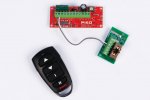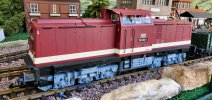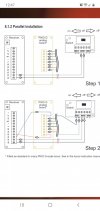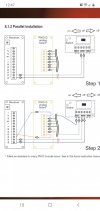Mike Whitcomb
Registered
I just purchased several of the Piko 35040 rc units. I attempted to install it in one of my Piko BR199's using track power. I followed all the instructions for a "parallel" set up using the piko board which came with the train. This way I wouldn't have to mess with all the directional lights. I tested it on the bench with a 4' piece of track and an old power source i found (might even be for an HO set up) It worked great, nice slow steady progression of speed, great response. So now let's try it on the layout. I clean all the tracks run my little LGB shunter around to test everything it all looks good. I am using a DC PWM Motor controller, reversible with 24v max w/40 amps for my power to the layout. I put the Piko BR 199 on the layout and using the supplied little remote off she goes. OK, not as fast as before the installation but its decent. After a few laps and maybe 10 min of run time it starts to pick up speed. So I'm thinking maybe its breaking in ok, it goes in both directions ok. Then it stops and smokes (no smoke unit installed) I shut it down. Can't tell where the smoke originated from. Try to start it up again, moves 6 inches then shuts down, I bring it back to the bench on the smaller power source, does the same thing 6 inches and shuts down. Took it apart and noticed what could be some burned off insulation on a wire between boards for the motors. Took the rc unit out installed in a battery loco and works like a dream. The wire that had the insulation melted off was a "solid strand" wire, not a multi strand wire. Too much resistance? 2 motors on this Harze Kamel. Any input would help.




